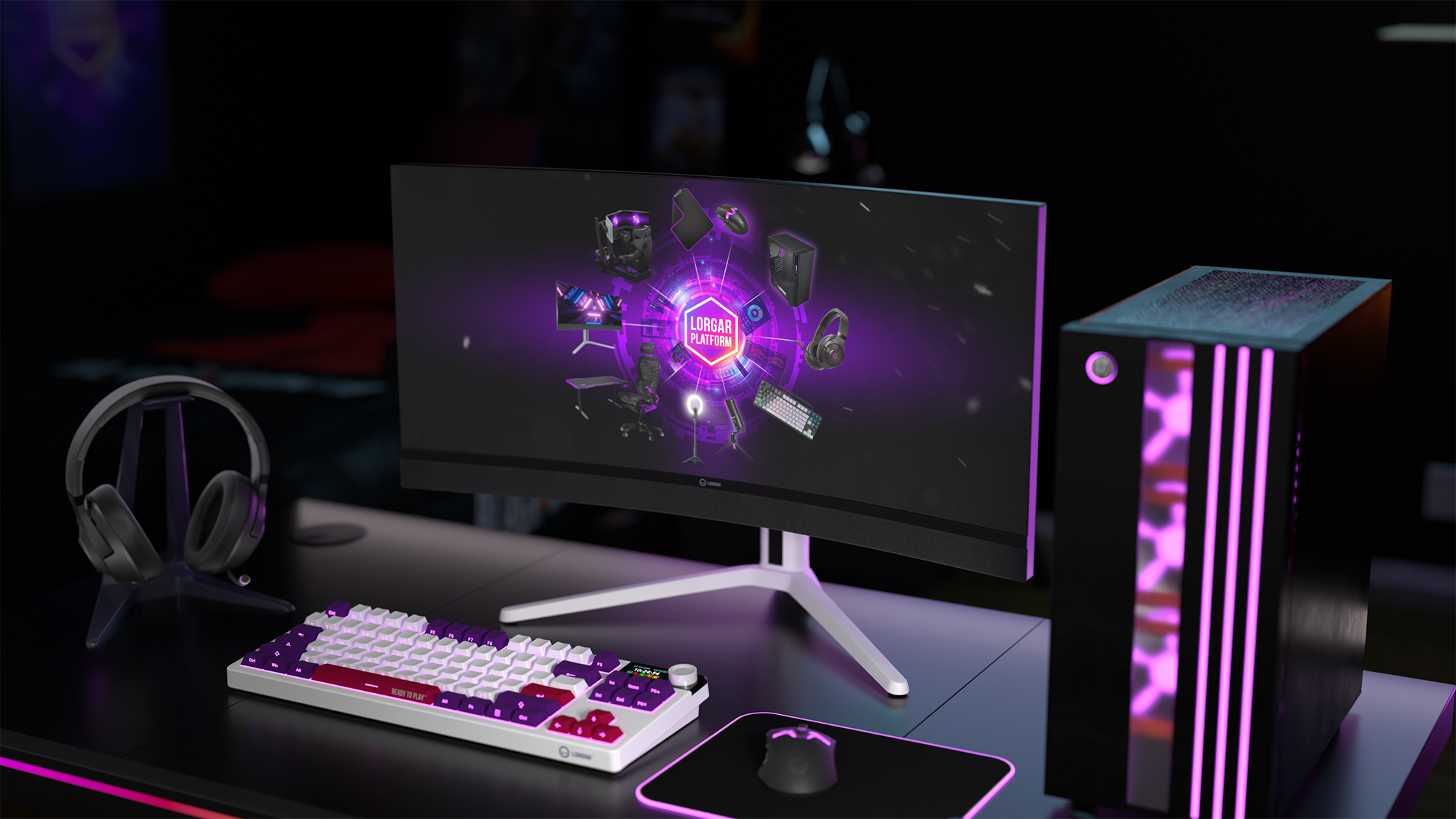The latest keyboard technology reflects a fascinating convergence of two previously distinct worlds: high-performance gaming peripherals and enthusiast-grade custom keyboards. This marriage of gaming functionality and refined aesthetics has created a new generation of devices that cater to both hardcore gamers and discerning typists.
Smaller Form Factors
The definition of the perfect keyboard size has undergone a significant shift. While full-size keyboards maintain their presence in professional environments, the trending keyboard formats now lean heavily toward more compact designs. The 75% layout has emerged as the sweet spot for many users, offering an optimal balance between desk space efficiency and functionality. This format retains the essential navigation cluster and arrow keys while eliminating the numpad, creating a more ergonomic positioning for the mouse hand. It is also more compact than “80%” or “Tenkeyless” or “TKL” style, which is also very popular due to its simplicity to make: just “cut” (during engineering process, of course) the numpad section from the full-size keyboard and you’re good to go!
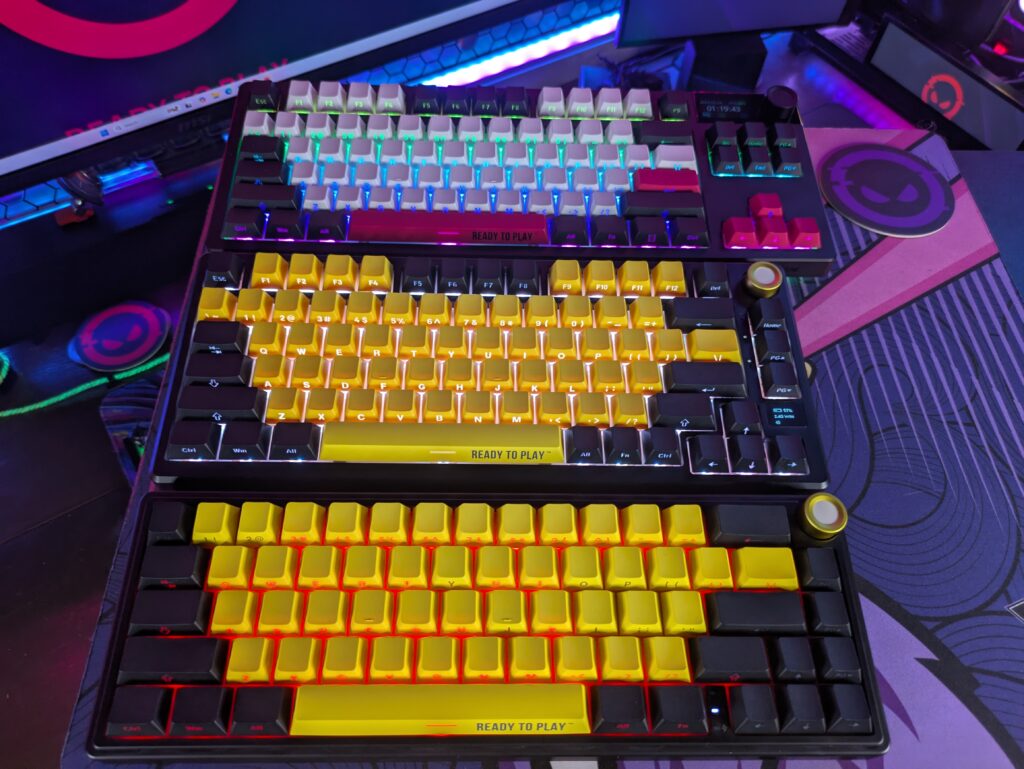
The rise of 75% keyboards isn’t merely about space-saving – it represents a broader shift in how we think about keyboard customization and productivity. Manufacturers have recognized that many users rarely utilize the numpad, preferring a more streamlined typing experience. This trend has prompted even traditional gaming peripheral companies to explore smaller form factors, incorporating features previously found only in boutique custom keyboards.
Colors Beyond Basic Black (And White)
The boring days of choosing between black and slightly different black are long gone. And this is not about the all-white PC builds, either (although this fashion is also well-covered by market propositions). Current keyboard design philosophy embraces personality and self-expression. Nowadays, keyboards start to include extensive customization options, with mainstream manufacturers offering multiple colorways for their products. This shift mirrors the custom keyboard community’s influence, where unique color combinations and topical designs have long been standard.
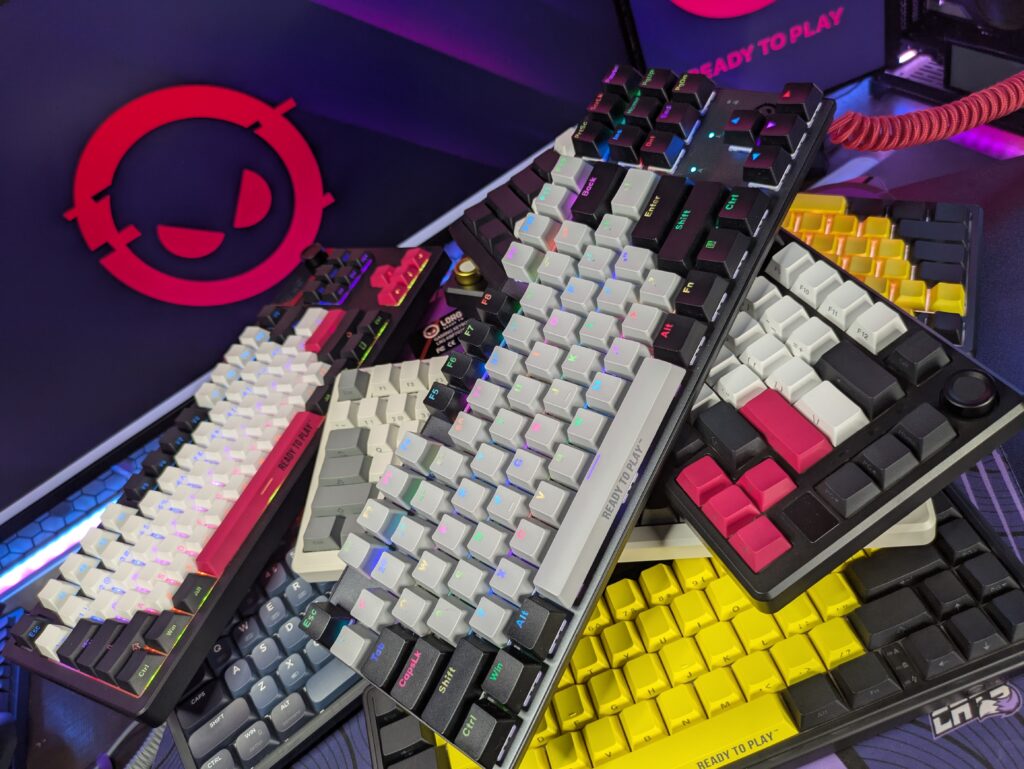
Speaking of colors – RGB backlight technology, while not new, has evolved beyond simple rainbow effects. Modern implementation focuses on subtle enhancement of key designs and practical features like layer indication. Software integration allows users to create complex lighting patterns that respond to in-game events or productivity milestones, making the backlight both aesthetically pleasing and functionally relevant.
Keycaps Evolution
Color combinations of the keycaps have grown more sophisticated. In addition to black and white keys, manufacturers began to offer carefully curated palettes that complement modern workspace aesthetics. These aren’t just random color matches – they’re thoughtfully designed (“color-matched”, as enthusiasts call it) schemes that consider factors like contrast, readability, and harmony with RGB lighting effects. The trend extends to artisan keycaps, as major manufacturers collaborate with studios to create limited-edition keys that serve as both functional components and collectible accessories. Usually, their use is limited to one or few keys on the board (“Escape” is the most popular position).
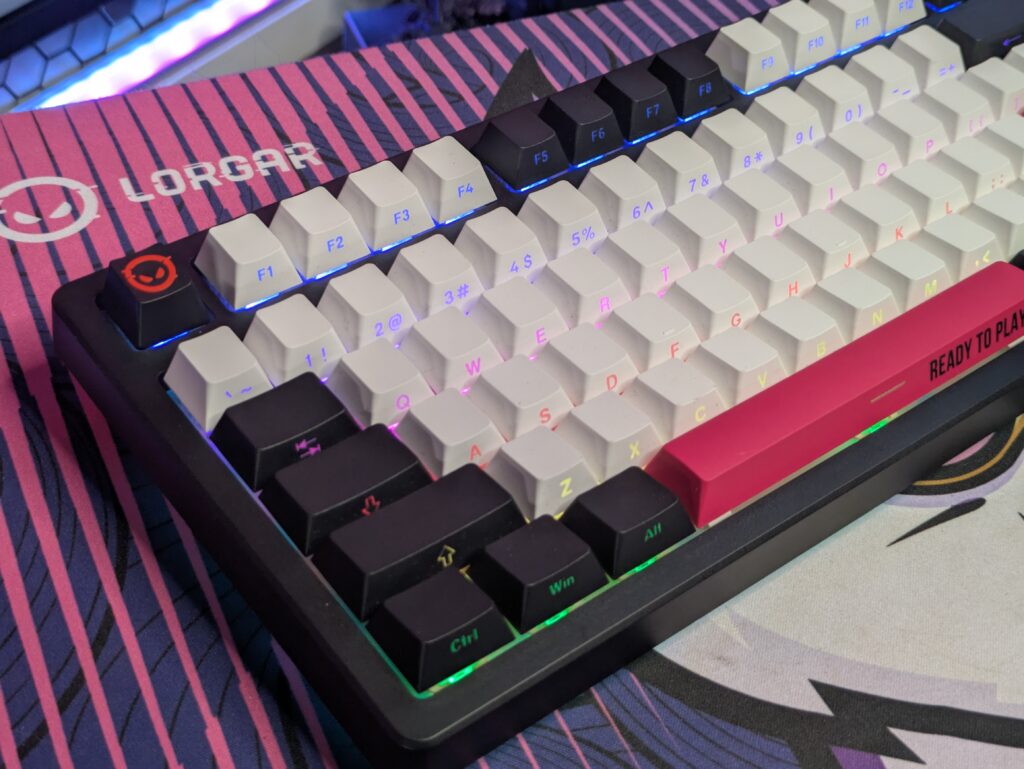
Lastly, keycap design has seen one more advancement. Side-printed legends becoming increasingly popular, even if not common. This feature, once exclusive to premium custom sets, allows for key functions to be clearly visible without cluttering the top surface thus creating a very sleek look of blank keys.
Gasket Mount
The adoption of gasket mount systems by mainstream manufacturers represents a significant shift in how typing experience is engineered. This mounting style, which suspends the PCB and plate assembly between carefully positioned strips of foam or silicone, has migrated from high-end custom keyboards to mass-market models. The gasket system creates a subtle but noticeable flexing action during typing, absorbing harsh bottom-out force and eliminating the rigid, harsh feeling associated with traditional mounting methods. Our testing reveals that properly implemented gasket mounting can reduce typing noise while maintaining consistent key response across the entire board.
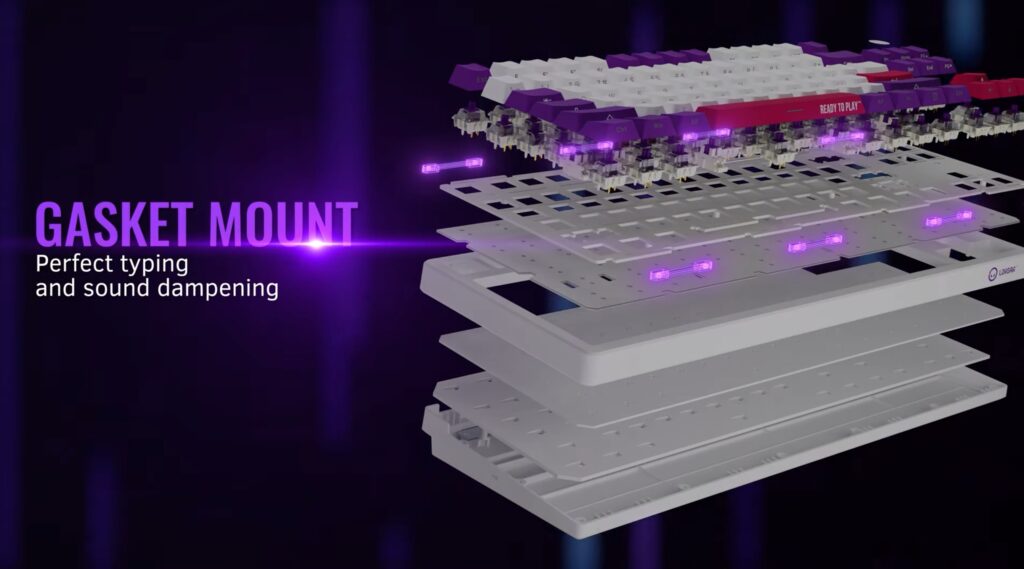
Major gaming peripheral companies have refined this technology further, developing proprietary gasket materials and mounting points that can be tuned for different use cases. Some models now feature adjustable gasket compression, allowing users to fine-tune the balance between rigid response for gaming and soft flex for extended typing sessions. This advancement in mounting technology demonstrates how enthusiast-grade engineering can enhance mainstream products, delivering tangible improvements in typing comfort and acoustic characteristics. And through the miracle of high-volume manufacture, gasket mount is not only for the expensive custom keyboards anymore. Typists, rejoice!
Magnetic Switches
Perhaps the most significant purely technical keyboard innovation is the adoption of magnetic switch technology. These switches offer unprecedented customization potential, allowing users to adjust actuation points and force curves on the fly. The technology represents a paradigm shift in how we think about keyboard feel and responsiveness, offering a level of personalization that was previously impossible.

Gaming peripheral manufacturers have embraced this technology, integrating it with sophisticated software that allows players to create different profiles for different games. A first-person shooter might benefit from hair-trigger actuation points, while strategy games might use a more deliberate, tactile setting. At the same time,
4000/8000 Hz Polling Rates
The push for faster polling rates continues, with 4000 Hz and even 8000 Hz emerging in premium models. The practical benefits of such high polling rates in the keyboard remain a topic of debate, as the advantage is less obvious than in the mouse. But anyway, the technology showcases the industry’s commitment to reducing input latency to theoretical minimums. This feature, primarily aimed at competitive gaming, demonstrates how specialized gaming needs continue to drive technical innovation. Of course, it is reasonable to remember that such polling rates can only be achieved for wired or 2.4 GHz connection, while Bluetooth is still limited to the humble 125 Hz.
Integrated Displays
The integration of small displays into keyboard design represents another significant trend to add unusual features. These screens serve multiple purposes, from showing system statistics to displaying custom animations. Some manufacturers even have implemented touch-sensitive panels!
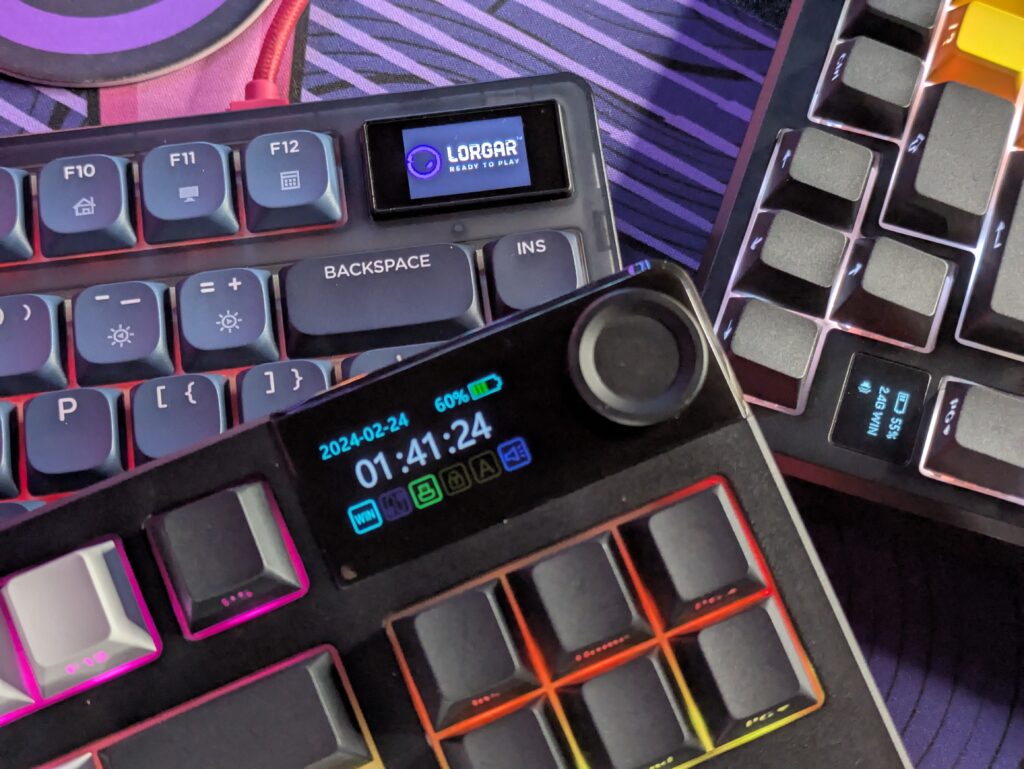
Generally speaking, no one really needs a screen built into the keyboard but at the same time everything becomes better with a display in it, right? Jokes aside, the market sees more and more keyboards with this feature.
Low-Profile Keyboards
Although hardly counted among the latest innovations in keyboards, the low-profile mechanical keyboards marks a fascinating convergence between traditional mechanical keyboard benefits and laptop-style typing dynamics. Major manufacturers have made significant strides in low-profile switch technology, with total travel distances typically ranging from 2.5mm to 3.5mm, compared to traditional mechanical switches’ 4mm travel.
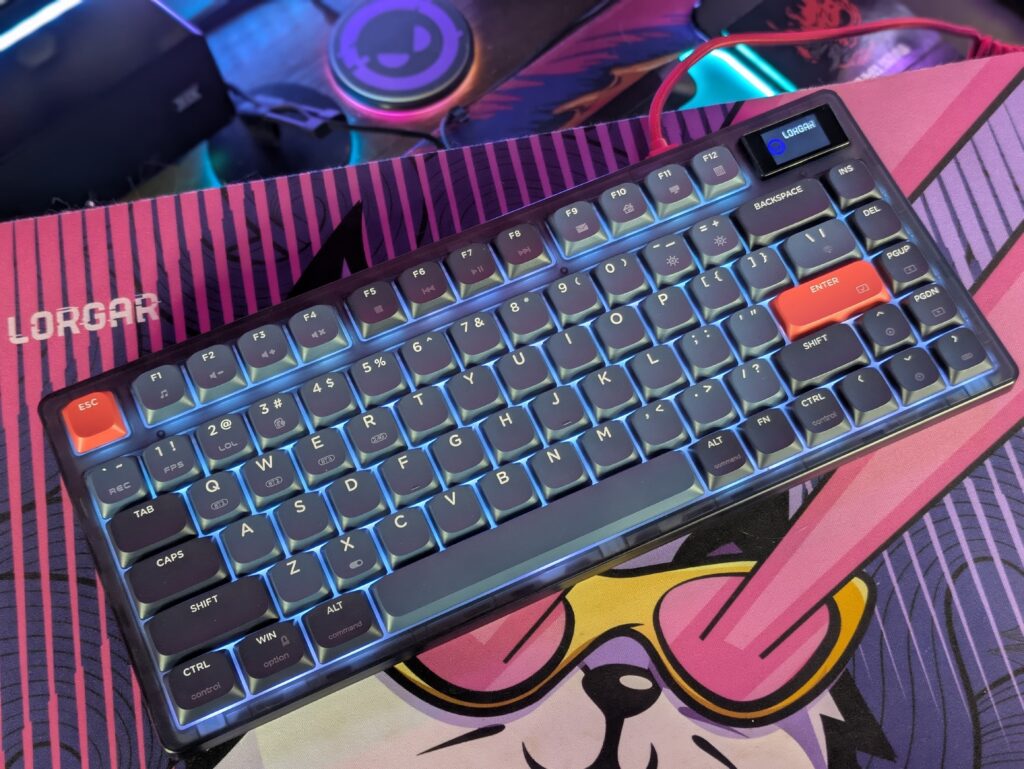
What’s particularly noteworthy in the newest implementations is the better sound profile. Switch manufacturers have refined their low-profile offerings, engineering switches that maintain distinct tactile characteristics despite the reduced vertical space. These improvements, combined with innovations in PBT keycap molding techniques that allow for thinner yet durable caps, have resulted in low-profile keyboards that offer a compelling middle ground between traditional mechanical keyboards and laptop typing experiences. The reduced height also provides ergonomic benefits, particularly for users who prefer typing without a wrist rest, as the lower profile naturally reduces wrist extension angles.
Looking Forward
As we progress through 2025, the keyboard industry continues to blur the lines between gaming peripherals and enthusiast-grade input devices. The integration of custom keyboard features into mainstream products has elevated the overall quality of keyboards available to the average consumer. This fusion of gaming performance and refined design aesthetics suggests a future where high-end features become increasingly accessible. The focus on customization extends beyond mere aesthetics. Modern keyboards are highly programmable devices, with robust software that allow users to tailor every aspect of their experience. From macros to lighting patterns, keyboards have become extensions of personal computing styles rather than simple input devices. Still, the keyboard market of 2025 demonstrates that innovation doesn’t always mean reinventing the wheel. Sometimes, it’s about taking existing concepts from different segments of the market and implementing them in ways that benefit a broader audience. As manufacturers continue to draw inspiration from both gaming requirements and enthusiast preferences, we can expect to see even more exciting developments in keyboard technology in the future.

